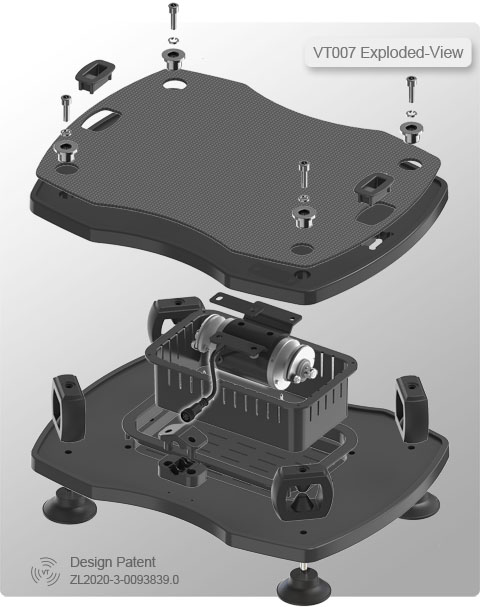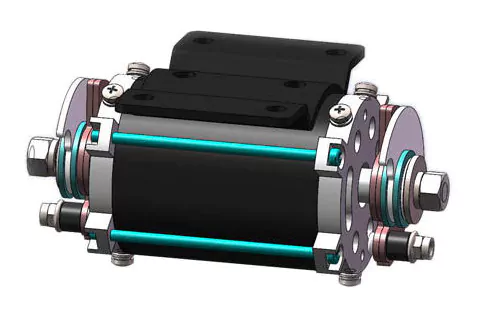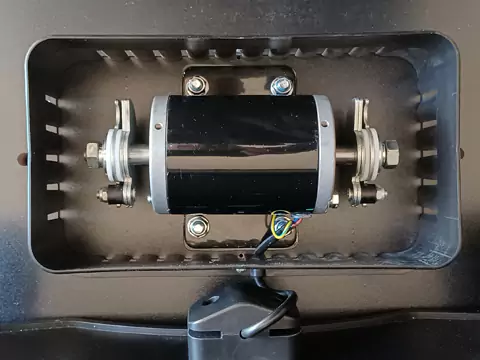Mechanics of Linear Vibration Plate
This article use VT007 vibration plate to explain the mechanics of linear vibration plate.
Construction
VT007’s machine frame consists of an upper board and a lower board, connected by four rubber springs positioned between them. Each board is made of high-density fiberboard and reinforced with a strong ABS outer ring mold-injected around the board.

A motor-eccentric wheels assembly (vibration drive) is mounted on the upper board from below.
The control console is separated from the main machine body. It is connected to the motor using a secure connector.
Mechanics
The vibration actuator is an assembly consists of a DC motor and 3 pairs of eccentric wheels. The DC motor rotates the eccentric wheels to create centrifugal force that pushes the upper board to move in an oval pattern.

The movement is regulated by the four strong rubber springs that support the upper board, and form the desired vibration directions. The upper plate moves mainly up-and-down, and modestly forth-and-back.

Vibration frequency is adjusted by the control console through changing the DC motor's input voltage.
The amplitude setting can be switched between high and low by changing motor rotation direction, which engage different numbers of eccentric wheels.
There is a clunk sound when the amplitude setting is switched. This is a normal sound. It does not harm the machine.